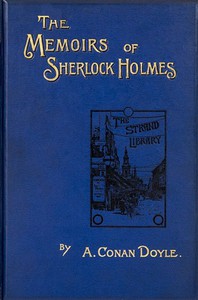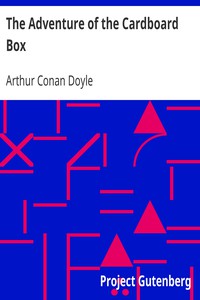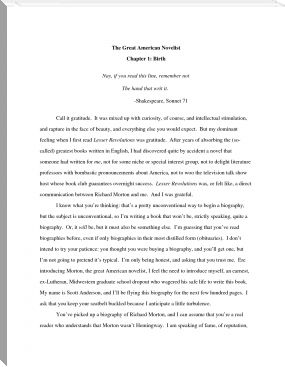The Memoirs of Sherlock Holmes by Arthur Conan Doyle (novels for beginners .TXT) 📕

Read free book «The Memoirs of Sherlock Holmes by Arthur Conan Doyle (novels for beginners .TXT) 📕» - read online or download for free at americanlibrarybooks.com
- Author: Arthur Conan Doyle
Read book online «The Memoirs of Sherlock Holmes by Arthur Conan Doyle (novels for beginners .TXT) 📕». Author - Arthur Conan Doyle
“The injury from which the unfortunate veteran was suffering was found to be a jagged cut some two inches long at the back part of his head, which had evidently been caused by a violent blow from a blunt weapon. Nor was it difficult to guess what that weapon may have been. Upon the floor, close to the body, was lying a singular club of hard carved wood with a bone handle. The Colonel possessed a varied collection of weapons brought from the different countries in which he had fought, and it is conjectured by the police that his club was among his trophies. The servants deny having seen it before, but among the numerous curiosities in the house it is possible that it may have been overlooked. Nothing else of importance was discovered in the room by the police, save the inexplicable fact that neither upon Mrs. Barclay’s person nor upon that of the victim nor in any part of the room was the missing key to be found. The door had eventually to be opened by a locksmith from Aldershot.
“That was the state of things, Watson, when upon the Tuesday morning I, at the request of Major Murphy, went down to Aldershot to supplement the efforts of the police. I think that you will acknowledge that the problem was already one of interest, but my observations soon made me realize that it was in truth much more extraordinary than would at first sight appear.
“Before examining the room I cross-questioned the servants, but only succeeded in eliciting the facts which I have already stated. One other detail of interest was remembered by Jane Stewart, the housemaid. You will remember that on hearing the sound of the quarrel she descended and returned with the other servants. On that first occasion, when she was alone, she says that the voices of her master and mistress were sunk so low that she could hear hardly anything, and judged by their tones rather than their words that they had fallen out. On my pressing her, however, she remembered that she heard the word ‘David’ uttered twice by the lady. The point is of the utmost importance as guiding us towards the reason of the sudden quarrel. The Colonel’s name, you remember, was James.
“There was one thing in the case which had made the deepest impression both upon the servants and the police. This was the contortion of the Colonel’s face. It had set, according to their account, into the most dreadful expression of fear and horror which a human countenance is capable of assuming. More than one person fainted at the mere sight of him, so terrible was the effect. It was quite certain that he had foreseen his fate, and that it had caused him the utmost horror. This, of course, fitted in well enough with the police theory, if the Colonel could have seen his wife making a murderous attack upon him. Nor was the fact of the wound being on the back of his head a fatal objection to this, as he might have turned to avoid the blow. No information could be got from the lady herself, who was temporarily insane from an acute attack of brain-fever.
“From the police I learned that Miss Morrison, who you remember went out that evening with Mrs. Barclay, denied having any knowledge of what it was which had caused the ill-humour in which her companion had returned.
“Having gathered these facts, Watson, I smoked several pipes over them, trying to separate those which were crucial from others which were merely incidental. There could be no question that the most distinctive and suggestive point in the case was the singular disappearance of the door-key. A most careful search had failed to discover it in the room. Therefore it must have been taken from it. But neither the Colonel nor the Colonel’s wife could have taken it. That was perfectly clear. Therefore a third person must have entered the room. And that third person could only have come in through the window. It seemed to me that a careful examination of the room and the lawn might possibly reveal some traces of this mysterious individual. You know my methods, Watson. There was not one of them which I did not apply to the inquiry. And it ended by my discovering traces, but very different ones from those which I had expected. There had been a man in the room, and he had crossed the lawn coming from the road. I was able to obtain five very clear impressions of his footmarks: one in the roadway itself, at the point where he had climbed the low wall, two on the lawn, and two very faint ones upon the stained boards near the window where he had entered. He had apparently rushed across the lawn, for his toe-marks were much deeper than his heels. But it was not the man who surprised me. It was his companion.”
“His companion!”
Holmes pulled a large sheet of tissue-paper out of his pocket and carefully unfolded it upon his knee.
“What do you make of that?” he asked.
The paper was covered with the tracings of the footmarks of some small animal. It had five well-marked footpads, an indication of long nails, and the whole print might be nearly as large as a dessert-spoon.
“It’s a dog,” said I.
“Did you ever hear of a dog running up a curtain? I found distinct traces that this creature had done so.”
“A monkey, then?”
“But it is not the print of a monkey.”
“What can it be, then?”
“Neither dog nor cat nor monkey nor any creature that we are familiar with. I have tried to reconstruct it from the measurements. Here are four prints where the beast has been standing motionless. You see that it is no less than fifteen inches from fore-foot to hind. Add to that the length of neck and head, and you get a creature not much less than two feet long—probably more if there is any tail. But now observe this other measurement. The animal has been moving, and we have the length of its stride. In each case it is only about three inches. You have an indication, you see, of a long body with very short legs attached to it. It has not been considerate enough to leave any of its hair behind it. But its general shape must be what I have indicated, and it can run up a curtain, and it is carnivorous.”
“How do you deduce that?”
“Because it ran up the curtain. A canary’s cage was hanging in the window, and its aim seems to have been to get at the bird.”
“Then what was the beast?”
“Ah, if I could give it a name it might go a long way towards solving the case. On the whole, it was probably some creature of the weasel and stoat tribe—and yet it is larger than any of these that I have seen.”





Comments (0)